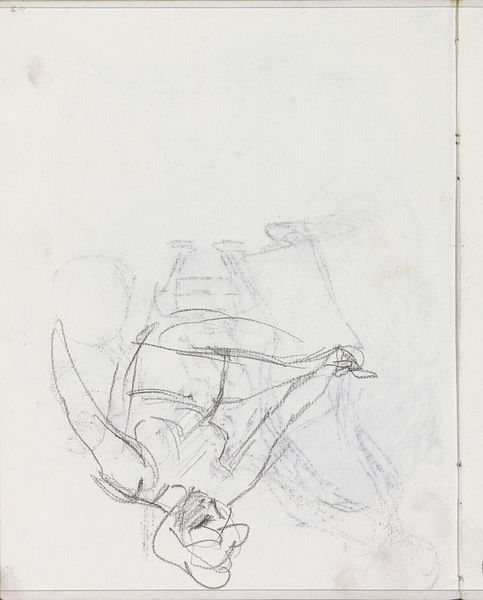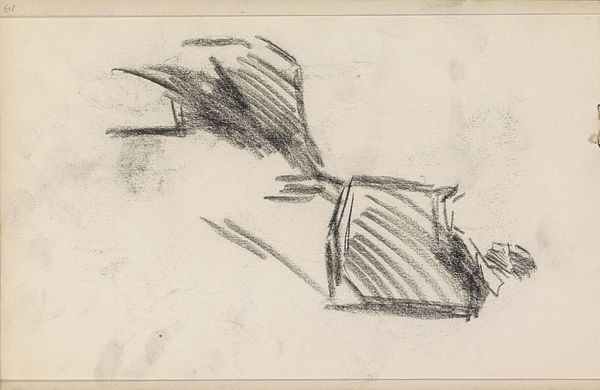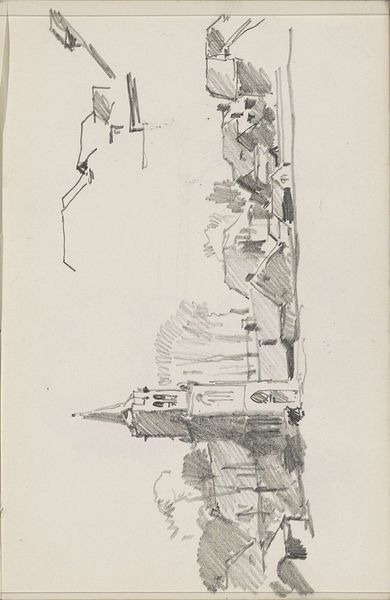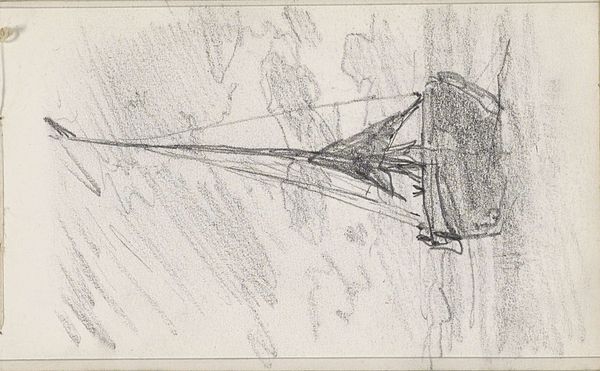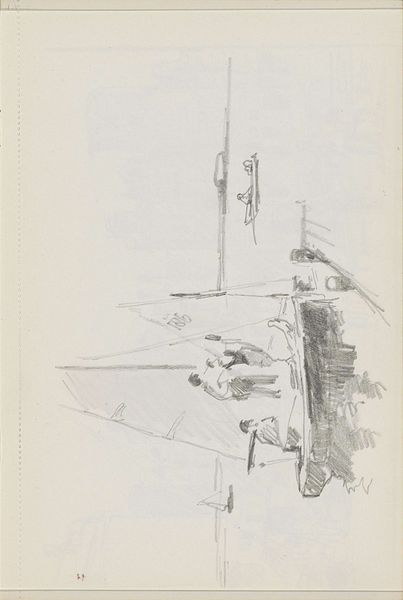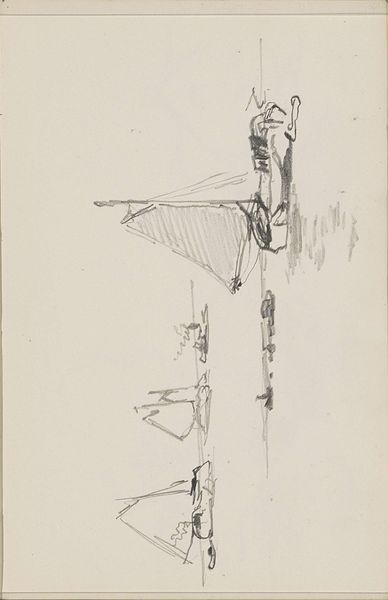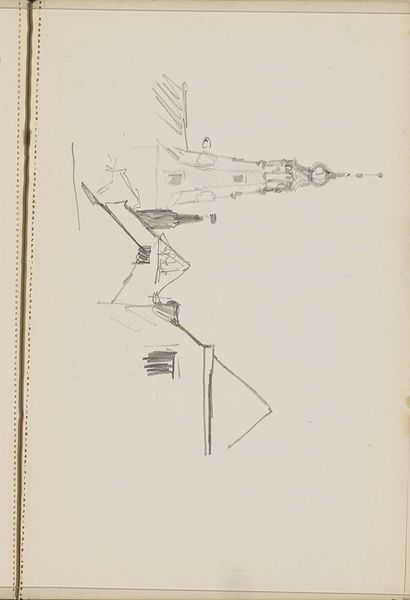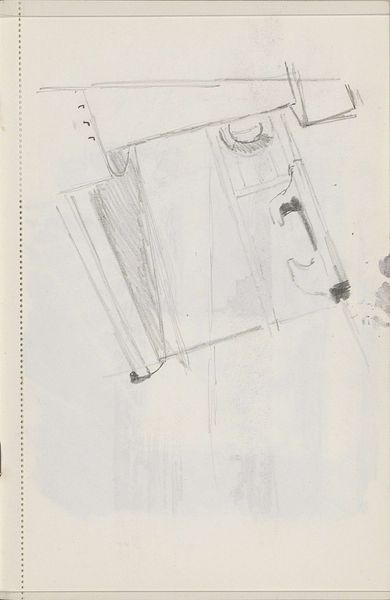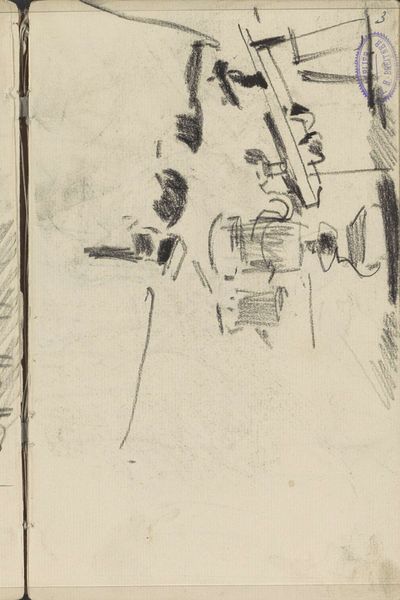
drawing, pencil
#
drawing
#
landscape
#
pencil
#
realism
Copyright: Rijks Museum: Open Domain
Curator: There's a dreamlike quality to Cornelis Vreedenburgh's pencil drawing, simply titled *Windmolen,* housed here at the Rijksmuseum and created sometime between 1890 and 1946. Editor: It does feel more like a fleeting thought than a fully realized image. There’s something haunting about its incompleteness, a sense of potential energy never quite unleashed. Curator: Absolutely. Note the almost skeletal form of the windmill itself, rendered with such sparse lines. The sketches above suggest a kind of palimpsest of thoughts, perhaps other landscapes or studies layered in the artist’s mind. Editor: What strikes me is how Vreedenburgh chose the windmill, already a symbol laden with national identity, yet drains it of all grandiosity. It becomes a fragile, almost vulnerable structure against the vast nothingness of the paper. This resonates deeply with the early 20th-century’s re-evaluation of nationalistic symbols in art. Curator: Exactly. Windmills, especially in Dutch art, often signify prosperity and industry, but here, it seems more introspective. Perhaps Vreedenburgh uses this familiar image to subtly reflect on a changing societal landscape and our relationship with the past. The rapid technological growth during that period began to impact these rural elements that once defined the culture. Editor: There’s also something about the deliberate simplicity, this almost naive rendering. The symbolic value of windmills, particularly their role in Dutch national identity, was under socio-political pressures from industrial modernity at this time. By drawing like this, perhaps he reflects both nostalgia and a knowing farewell. Curator: A poignant observation. The starkness could certainly suggest a farewell, rather than a celebration. He's playing with cultural memory. Editor: It reminds us that even the most recognizable symbols are constantly being redefined, negotiated, and, yes, sometimes mourned. Curator: A reminder that a seemingly simple sketch can hold complex dialogues about our evolving relationship with both nature and history.
Comments
No comments
Be the first to comment and join the conversation on the ultimate creative platform.

